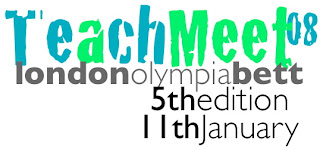
At 2.20pm today I Tweeted via my mobile –
‘Tearing hair out with yr5 – perhaps rewriting Machado’s Spanish poem Primavera was adventurous, but they only had to change 2 words!’
My words of desperation unfortunately did not arrive in the Twitterverse – Twitter seems to be having the sort of day I have – but by the end of the afternoon a new post had arrived on Vámonos proving that the lesson didn’t end as badly as it might have done!
The Scheme of work for Year5 this half term is based around Unit 17 of the QCA KS2 Schemes for Spanish – ‘El retorno de la primavera’. This covers the weather and seasons before looking at a poem by Machado called La Primavera and linking to the myth of Persephone. I’m trying to redo the KS2 scheme as I go along and thought I’d try out some of the QCA units to see what I thought – and also how the kids would like them!
Now, this particular class are lively and perhaps not your ideal ‘guinea pigs’ but nothing ventured…
The idea was to consider the poem La Primavera (not quite the same version but a lovely gerber daisy!), looking how we can work out what it means, and considering the rhythm and repetition, especially of the chorus
Y nadie sabe cómo ha sido
Hay una escuela y
Una margarita
Que es la maestra
Well, despite my beautiful Powerpoint (I’ll put it in my Box of Goodies) judging by the ideas put forth by some pupils, the idea of poetic language was completely lost on some of them, in English let alone Spanish! However, when we arrived at the point of suggesting new places and matching jobs, there were some good ideas that seemed to fit the theme and feeling of the poem. We had a swimming pool with the daisy as lifeguard, a hotel with a receptionist and a playground with a Mum (we also had the inevitable football stadium with a footballer) Each child made their own version and wrote it up as handwriting practice.
But the class were still so noisy (in an annoying rather than naughty way) I was in need of some magic to regain my sanity.
Step forward and take a bow Sony Ericsson K800i and my lovely pink blog.
Joe had worked hard all lesson and had come up with an original idea of a circus and a clown, so I asked if he minded me blogging his work. Amazing the ripple of ‘blogging’ that went around the room as I took a quick snap of his work and proceeded to text my post. With my blog on the IWB, I pressed the refresh button and ….. the sound of 30 kids exhaling as one, and a hush only broken by Joe squealing ‘that’s my work!’ and then a clamour to find out how I’d done it.
As I told them , teacher’s can do magic – with a bit of help ;o)













